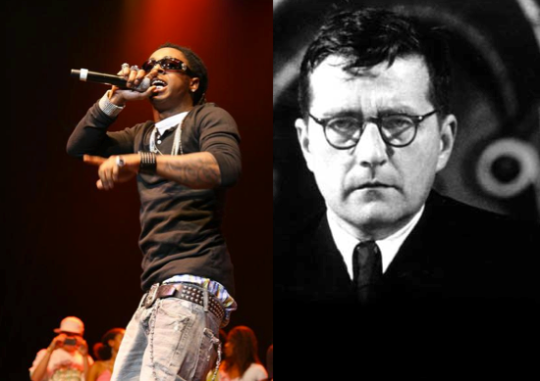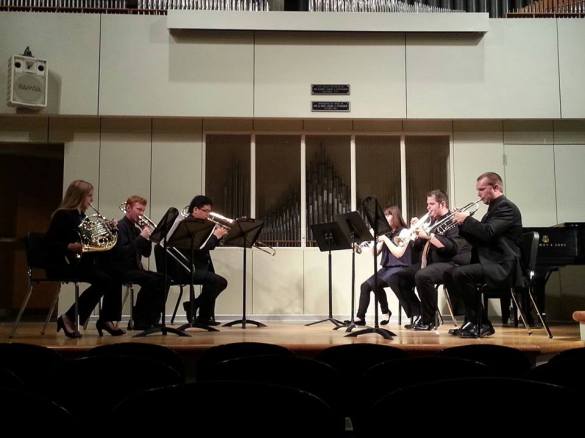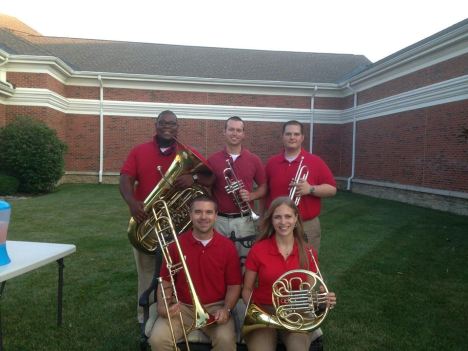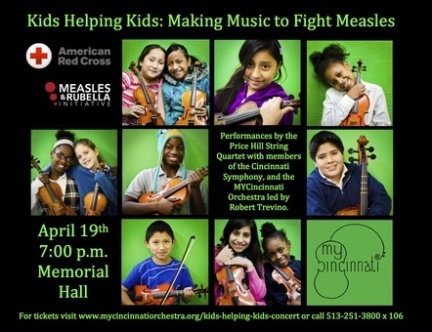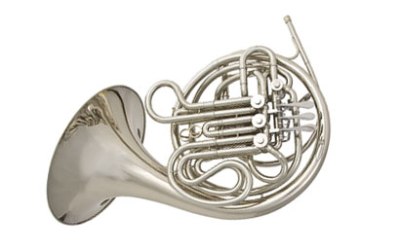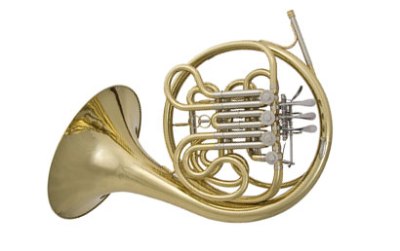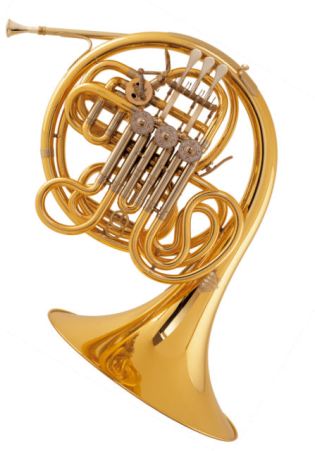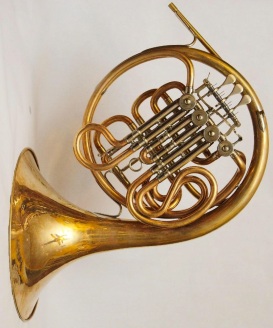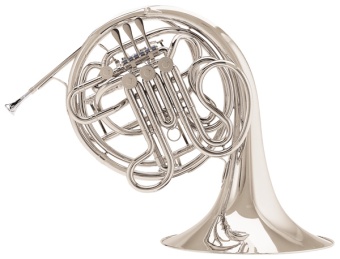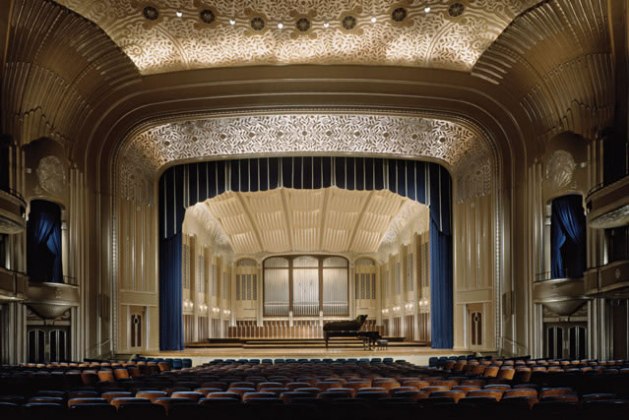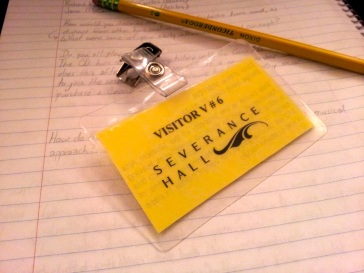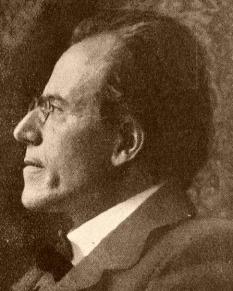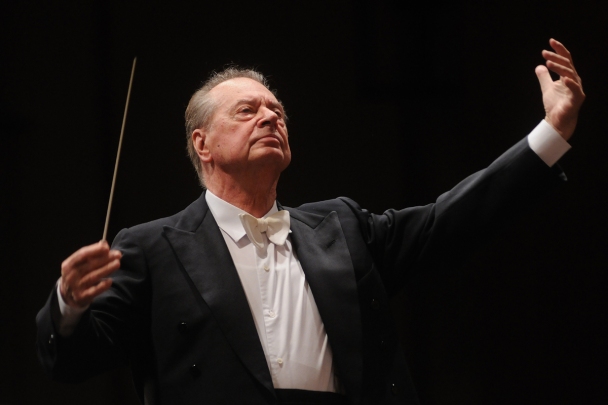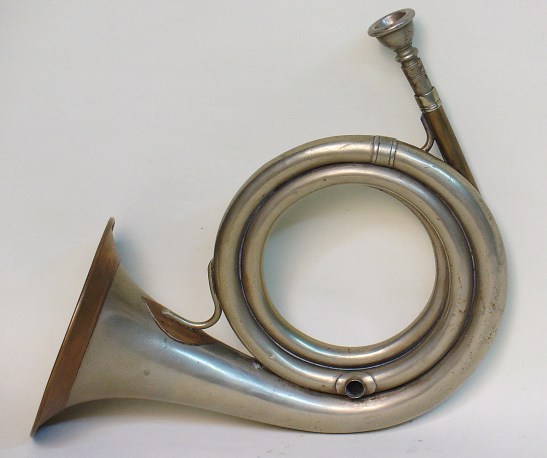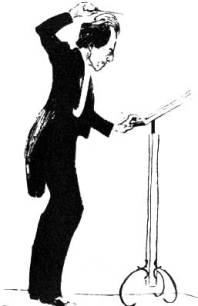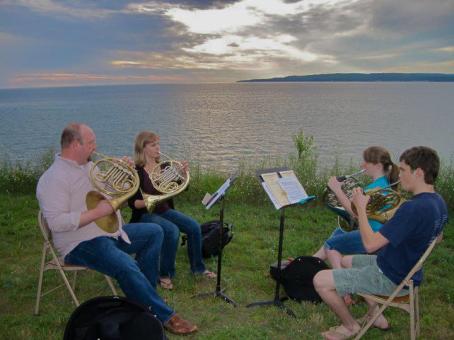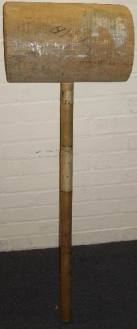Happy summer, everyone! I think it’s safe to say it’s been a pretty eventful one across the board so far, what with the land hurricanes and sweltering heat and such. I hope everyone is staying safe and cool!
I mentioned in my last entry that I was lucky enough to have lunch with several members of the Minnesota Orchestra horn section – present and retired. They are a wonderful group of people. The lunch was very informative and it was a real treat to see this sort of friendship between professionals.
Here’s the cast of characters!
 Ellen Dinwiddie Smith
Ellen Dinwiddie Smith
Currently playing third horn in the section, Ellen Dinwiddie Smith has been a member of the Minnesota Orchestra since 1993. Prior to joining the Minnesota Orchestra, she graduated from the Curtis Institute of Music and was a member of the Charleston Symphony Orchestra as well as the Fort Worth Symphony Orchestra. An active chamber musician, she founded the Colonial Chamber Series in 2006, which offers several chamber concerts per year at the Colonial Church Edina, Minnesota.
 Herbert Winslow
Herbert Winslow
Herbert Winslow joined the Minnesota Orchestra in 2005 as associate principal horn. Prior to this, he graduated from the Curtis Institute of Music, played principal horn with the Saint Paul Chamber Orchestra from 1981 to 2006 and assistant principal horn with the New Mexico Symphony. He is currently an adjunct horn professor at St. Olaf College and performs as a soloist and chamber musician.
 Michael Gast
Michael Gast
Micheal Gast plays principal horn in the Minnesota Orchestra and has been a member since 1990. During his tenure with the orchestra, he has performed numerous concertos and other major works for horn with the orchestra. He graduated from the Curtis Institute of Music and was a member of the Jacksonville and San Antonio Symphonies. He is currently an adjunct horn professor at the University of Minnesota.
 Bruce Rardin
Bruce Rardin
Bruce Rardin began playing with the Minnesota Orchestra in 1948 (it was called the Minneapolis Symphony at the time). He performed as Assistant Principal in the orchestra. Prior to this, Rardin attended the McPhail Music School in Minneapolis and served as musician in the armed forces.
 David Kamminga
David Kamminga
David Kamminga joined the Minnesota Orchestra in 1967 as fourth horn. Prior to this, he attended Calvin College and Michigan State University, as well as performing in the New Orleans Philharmonic and Opera Orchestras, the Santa Fe Opera Orchestra, and the American Wind Symphony.
These sound bites do not even begin to capture the rich and varied careers of these outstanding musicians. Please do yourself a favor and check out some of their recordings! Their recent set of Beethoven symphonies was lauded by The New York Times writer Anne Midgette as perhaps “the definitive one of our time.”
After attending the rehearsal I described in a previous entry the group of us went out for lunch. We settled in and began the interview discussing equipment. Rardin said that the entire section played on Geyer style horns when he joined the orchestra in 1948. The section gravitated more toward the Kruspe style wrap later when Charles McDonald and Phil Meyers joined the section playing Conn 8D horns. (I will go more in depth to describe the Geyer and Kruspe styles of horns in a future entry.) When Kendall Betts joined the orchestra in the early 80s, the section shifted equipment once more. Betts preferred the rich, dark sound of the Lawson horn. Gast was not playing a Lawson at the time he joined the orchestra in 1990, and soon switched instruments to match the rest of the section.
“You had a beat-up Paxman, didn’t you?” Rardin asked Gast.
“There was a hole in it,” Smith recalled, laughing.
“You know, a hole was in it and I had black tape on the holes…electrical tape…and one of the stipulations of my contract was that I would purchase one of these horns that the section was playing, the Lawsons,” said Gast. At the time, the Lawson horns were made of a special alloy called Ambronze, which Lawson developed for its acoustical properties. Despite the beautiful sound of the Lawson horns, they were very heavy; Gast recalled that the players had to be “very physically fit and in shape…It put out a lot of sound, but there was so much metal in it that you have to be very physical to play the instrument.” Later, however, Lawson developed a lighter model called the Fourier. “Most of us kind of switched to Fouriers at one point. And then [Lawson] came out with what’s called the V2 lead pipe, which is a lead pipe inside of a lead pipe.” He and Smith performed experiments in the music hall comparing the two lead pipes. “You played the standard FB210 lead pipe and the horn was very directional in the hall, and you could hear where the horn players were sitting. And then when we put the V2 pipe on, all of a sudden the sound was coming from all around you.”
Smith had originally begun playing a Lawson to blend with the horn section in the Fort Worth. She played on the older Ambronze Lawson, then switched to the Fourier when it was developed. Having previously played on a Conn 8D, similar to the Fourier, Smith described the change as “Coming back home…I was very comfortable right away on the Fourier.”
“That’s fortunately the experience I had,” Winslow chimed in. “I played on an 8D from high school until 1989.” As a friend of Walter Lawson, Winslow tried out several horns at Lawson’s own facility. None of these heavier horns suited him. “I had known Walter since I was in high school, so when I walked back in I felt horrible because I didn’t want to tell him I didn’t like these horns! And he said, ‘Well that’s alright, I knew you wouldn’t, so go take this one and see how that feels.’ And it was the Fourier!” He immediately connected with the horn and explained that “It was not any influence from Kendall or anything that led me there, it was just that that was the horn that I also felt fit me and gave me the timbres and the tones that I was after.”
The section was augmented for the Mahler performance by several substitute horn players, and every performer played on a Lawson or some combination of Lawson and a Conn 8D equipment. The shared equipment created a highly unified sound to the section.
Despite our thorough discussion of the section’s equipment, Winslow emphasized the importance of sound, style, and musicality over gear. “I think there are a lot of players who modify their equipment so they can do their best to guarantee themselves 100% accuracy all the time, even though their sound might not be great all the time. And I think we’re all comfortable taking the risk of letting the sound be the most important thing, and strive for the accuracy. But If I had my druthers, I’d rather have the sound [be the primary goal, and] miss a note once in a while.”
“And we’re lucky we have a music director that lets the occasional note go by,” Gast added with regards the current music director, Osmo Vänksä. “If it becomes a habit, yeah, you’re going to get called on, but he wants us to take chances…He wants extremes and he’s willing to take the risk. That’s a rare thing in most conductors.”
Shifting away from the topic of equipment, I asked the section about influences on their concept of sound, specifically early recordings they listened to or players they admired.
For some, recordings had been highly influential. “I know immediately,” said Kamminga. “There was an old archived recording of the Haydn second horn concerto, and the player was named Rolf Lind…he had a sound that just spoke to me…after that it was Chambers and Bloom.”
Smith was similarly influenced by a specific recording. “When I was growing up, my parents bought a new car, and they had an 8-track with it…and one of the things on [the tape] was Alan Civil playing the Mozart horn concertos. And I was crazy about that recording. I was bananas for it. And somebody asked me later like, ‘How’d you learn to trill?’ and I said, ‘From listening to Alan Civil.”’
“She’s a trilling fool, too, let me tell you!” Kamminga exclaimed. “She can trill at the drop of a hat. It’s just awful!”
“But you know, you just listen to him and you can’t not do it!” said Smith.
“Yeah, uh-huh. I listen to him and I can’t trill! Must be me, huh?” Kamminga joked.
Smith laughed as she recalled another influential recording. “When I first started, my mom knew right away that I really liked [horn playing] so she bought me these Funk and Wagnall recordings from Safeway. The first one was Copland; it was American music but it was fun. The second one was Brahms Piano Concerto No. 2. And I thought I had died and gone to heaven. It was my favorite thing that I had ever gotten.” Years later, she listened to the record again. “I put it on, and I’m telling you, that is like some German community orchestra out in the middle of nowhere. It’s a terrible recording – and I loved it! I loved it because it was just, you know, the music!” Still, she believes “It was…those first Alan Civil things that mean the most because I was the youngest…So maybe what people listen to is really important when they’re young.”
“It wasn’t so much that I wanted a particular sound in the beginning,” said Winslow, “but the very first recording I ever had of a horn player playing a solo was [Dennis] Brain doing the Hindemith concerto…That’s certainly a great foundation of sound.” Later, he purchased a recording of Schumann’s Konzertstuck for four horns and orchestra. “[It was] an entirely different sound! And yet, what amazed me was the way a section could work and blend together. And they all didn’t have the same sound…You could hear each different player as they did the arpeggios and their different sound, and then you hear them all together and you hear this mass; it was amazing.”
Gast also recalled his interest in section playing. At first, he mostly listened to soloists’ performances. Having played cornet until late in high school, he enjoyed the recordings of Dennis Brain, admiring his dexterity and light, trumpet-like sound. Later, he listened to the recordings of renowned soloist Hermann Baumann. “I thought, ‘Wow, that’s cool, I don’t like the vibrato, but it’s kind of a husky sound.” Hearing soloist Barry Tuckwell perform, he decided “That’s what I want to sound like – Tuckwell.” Later, he heard more section playing. “I hadn’t heard an orchestra until I got into [Curtis],” Gast recalled. “And then I heard the Philadelphia Orchestra do Brahms 2 the first week I was there…and hearing Mason play, just glorious sound…a great section together.”
While discussing sound concepts, the topic of contrast between the Chicago sound and the Minnesota sound arose a few times. This was particularly interesting, since Chicago was the last orchestra I visited.
Having listened to the two orchestras perform both live and in recordings, I have found that the horn sections possess vastly different sound concepts. In stronger dynamics, the Chicago Symphony Orchestra horns produce an incredibly powerful, brassy sound, and the Minnesota Orchestra horn sound, while powerful, maintains what Gast described as “the old American school – a sonorous, big East Coast sound…I heard someone say that in the Chicago Symphony, the sound of the horns comes through the orchestra, and with a big East Coast sound it comes over the top of the orchestra.” I found this to be an apt description. When I listened to the Minnesota Orchestra’s recordings and live performances, the horn sound possessed a haunting, far-away quality, and seemed to come from all directions in the hall. It was a unique and beautiful sound quality I had not heard often. Both Chicago and Minnesota, however, have outstanding horn sections that are incredibly musical. The stylistic differences between the two merely highlight the wide variety of sounds that horn players can produce based on equipment, experience, and personal style.
From there, the conversation wandered to auditioning. I asked about the dilemma of auditioning a technically sound and musical player who played with a sound that differed from the section.
“I would say, here’s the thing,” Smith responded, “When we put someone into the finals, we have to know that that person can sit in the section and play with us….If they’re going to get into the finals, they have to be someone who we think can fit in.”
Winslow added that if an audition candidate believes he/she played well but does not advance in the audition, it may not be because of poor playing. “It’s just that, you know, we play with different styles. And don’t try to psych out what it is [the committee is] looking for or try to play on equipment you’re not used to…I thought I played some pretty good auditions and didn’t make it past the first round, and I played some auditions where I knew I was walking out the door and they called my number to stay for the next round! You never know. But that’s the whole idea of sound concept, the way you would do a phrase or something, you can’t know what the people on the other side of that screen are looking for. You just put it out there, and if it works, it works.”
“One of the other questions I wanted to address is what qualities you look for in an audition candidate. And you would say the biggest thing is…musicality and an ability to blend with the section?” I asked.
“No, I think the very biggest thing is rhythm and pitch!” Smith said.
“We’ve heard people play flawless auditions but they can’t count in the rests,” Gast added. (Hello, metronome.)
“I was kind of hoping you were gonna ask me why I took up the horn,” said Kamminga.
“Why?” Rardin and I asked in unison.
“Somebody told me that I’d end up getting all the girls!” he replied.
“And look – we’re right here!” said Smith, gesturing to herself and me.
“And here I am! It worked!”
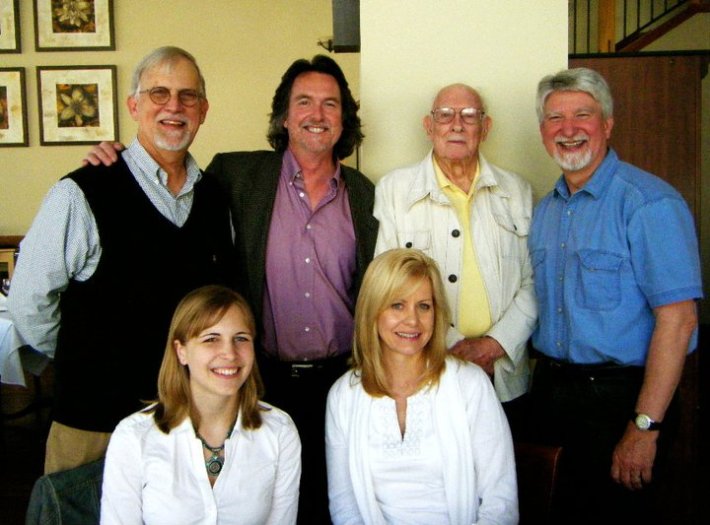
As our conversation came to a close, Gast made a final comment. “The section plays very well together, I have to brag on it…this is one of the few horn sections that gets along with each other and we hang out and party together and have luncheons – and it’s a rare thing.” I thoroughly agreed with him. I had a wonderful time with the section. It was encouraging to see the easygoing rapport and mutual respect shared by these world class musicians. I hope someday to find myself in a similar professional situation.
Tags: classical, horn, minnesota, music, orchestra

